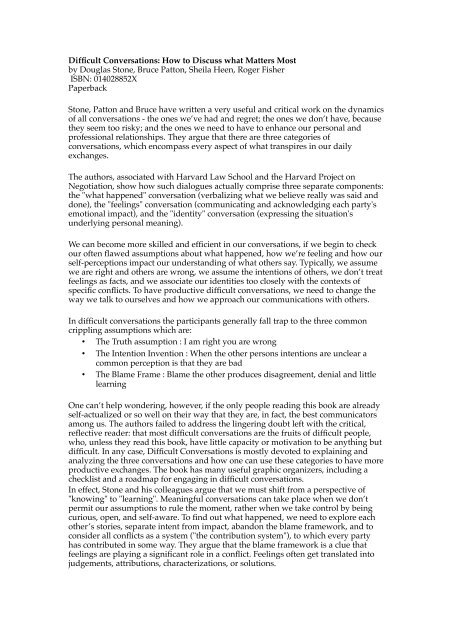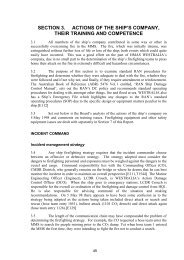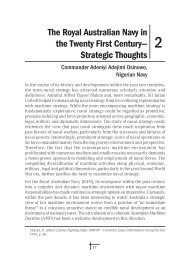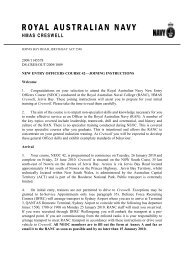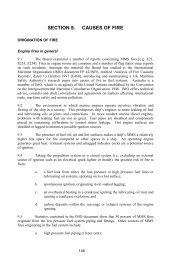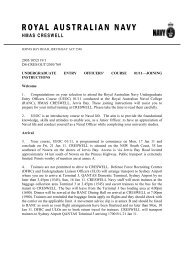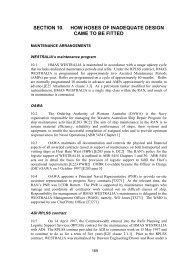Difficult Conversations: How to Discuss what Matters Most
Difficult Conversations: How to Discuss what Matters Most
Difficult Conversations: How to Discuss what Matters Most
Create successful ePaper yourself
Turn your PDF publications into a flip-book with our unique Google optimized e-Paper software.
<strong>Difficult</strong> <strong>Conversations</strong>: <strong>How</strong> <strong>to</strong> <strong>Discuss</strong> <strong>what</strong> <strong>Matters</strong> <strong>Most</strong><br />
by Douglas S<strong>to</strong>ne, Bruce Pat<strong>to</strong>n, Sheila Heen, Roger Fisher<br />
ISBN: 014028852X<br />
Paperback<br />
S<strong>to</strong>ne, Pat<strong>to</strong>n and Bruce have written a very useful and critical work on the dynamics<br />
of all conversations - the ones we’ve had and regret; the ones we don’t have, because<br />
they seem <strong>to</strong>o risky; and the ones we need <strong>to</strong> have <strong>to</strong> enhance our personal and<br />
professional relationships. They argue that there are three categories of<br />
conversations, which encompass every aspect of <strong>what</strong> transpires in our daily<br />
exchanges.<br />
The authors, associated with Harvard Law School and the Harvard Project on<br />
Negotiation, show how such dialogues actually comprise three separate components:<br />
the "<strong>what</strong> happened" conversation (verbalizing <strong>what</strong> we believe really was said and<br />
done), the "feelings" conversation (communicating and acknowledging each party's<br />
emotional impact), and the "identity" conversation (expressing the situation's<br />
underlying personal meaning).<br />
We can become more skilled and efficient in our conversations, if we begin <strong>to</strong> check<br />
our often flawed assumptions about <strong>what</strong> happened, how we’re feeling and how our<br />
self-perceptions impact our understanding of <strong>what</strong> others say. Typically, we assume<br />
we are right and others are wrong, we assume the intentions of others, we don’t treat<br />
feelings as facts, and we associate our identities <strong>to</strong>o closely with the contexts of<br />
specific conflicts. To have productive difficult conversations, we need <strong>to</strong> change the<br />
way we talk <strong>to</strong> ourselves and how we approach our communications with others.<br />
In difficult conversations the participants generally fall trap <strong>to</strong> the three common<br />
crippling assumptions which are:<br />
• The Truth assumption : I am right you are wrong<br />
• The Intention Invention : When the other persons intentions are unclear a<br />
common perception is that they are bad<br />
• The Blame Frame : Blame the other produces disagreement, denial and little<br />
learning<br />
One can’t help wondering, however, if the only people reading this book are already<br />
self-actualized or so well on their way that they are, in fact, the best communica<strong>to</strong>rs<br />
among us. The authors failed <strong>to</strong> address the lingering doubt left with the critical,<br />
reflective reader: that most difficult conversations are the fruits of difficult people,<br />
who, unless they read this book, have little capacity or motivation <strong>to</strong> be anything but<br />
difficult. In any case, <strong>Difficult</strong> <strong>Conversations</strong> is mostly devoted <strong>to</strong> explaining and<br />
analyzing the three conversations and how one can use these categories <strong>to</strong> have more<br />
productive exchanges. The book has many useful graphic organizers, including a<br />
checklist and a roadmap for engaging in difficult conversations.<br />
In effect, S<strong>to</strong>ne and his colleagues argue that we must shift from a perspective of<br />
"knowing" <strong>to</strong> "learning". Meaningful conversations can take place when we don’t<br />
permit our assumptions <strong>to</strong> rule the moment, rather when we take control by being<br />
curious, open, and self-aware. To find out <strong>what</strong> happened, we need <strong>to</strong> explore each<br />
other’s s<strong>to</strong>ries, separate intent from impact, abandon the blame framework, and <strong>to</strong><br />
consider all conflicts as a system ("the contribution system"), <strong>to</strong> which every party<br />
has contributed in some way. They argue that the blame framework is a clue that<br />
feelings are playing a significant role in a conflict. Feelings often get translated in<strong>to</strong><br />
judgements, attributions, characterizations, or solutions.
The key <strong>to</strong> managing feelings is <strong>to</strong> treat them as facts by acknowledging them, and<br />
considering how they are part of the problem and exploring them fully. All <strong>to</strong>o often<br />
our feelings emerge from the sense that our identity is somehow at stake. <strong>Most</strong> of us frame<br />
our identities around one or all of three core themes: competence, virtue, or worthiness.<br />
When we feel any of these is questioned, we revert <strong>to</strong> fight or flight. We can best<br />
manage the identity issue by understanding ourselves as complex, by knowing we<br />
make mistakes, by acknowledging that our intentions are not simple, and by<br />
recognizing that all parties contribute <strong>to</strong> problems. The "learning" must begin within<br />
ourselves before we can understand issues or problems with others.<br />
We can affect our own conversational "learning" by engaging in "the third s<strong>to</strong>ry"<br />
conversation, which requires us <strong>to</strong> consider how a third party would describe and<br />
analyze the situation. This sets up a process of internal dialogue, which is necessary<br />
<strong>to</strong> check our own perceptions, feelings, and interests. Further, the authors encourage<br />
listening from the inside out, speaking for yourself, and taking the initiative. While<br />
the book combines theory, examples, and description, it is also a very handy guide <strong>to</strong><br />
improving ones communication style in the workplace or at home


